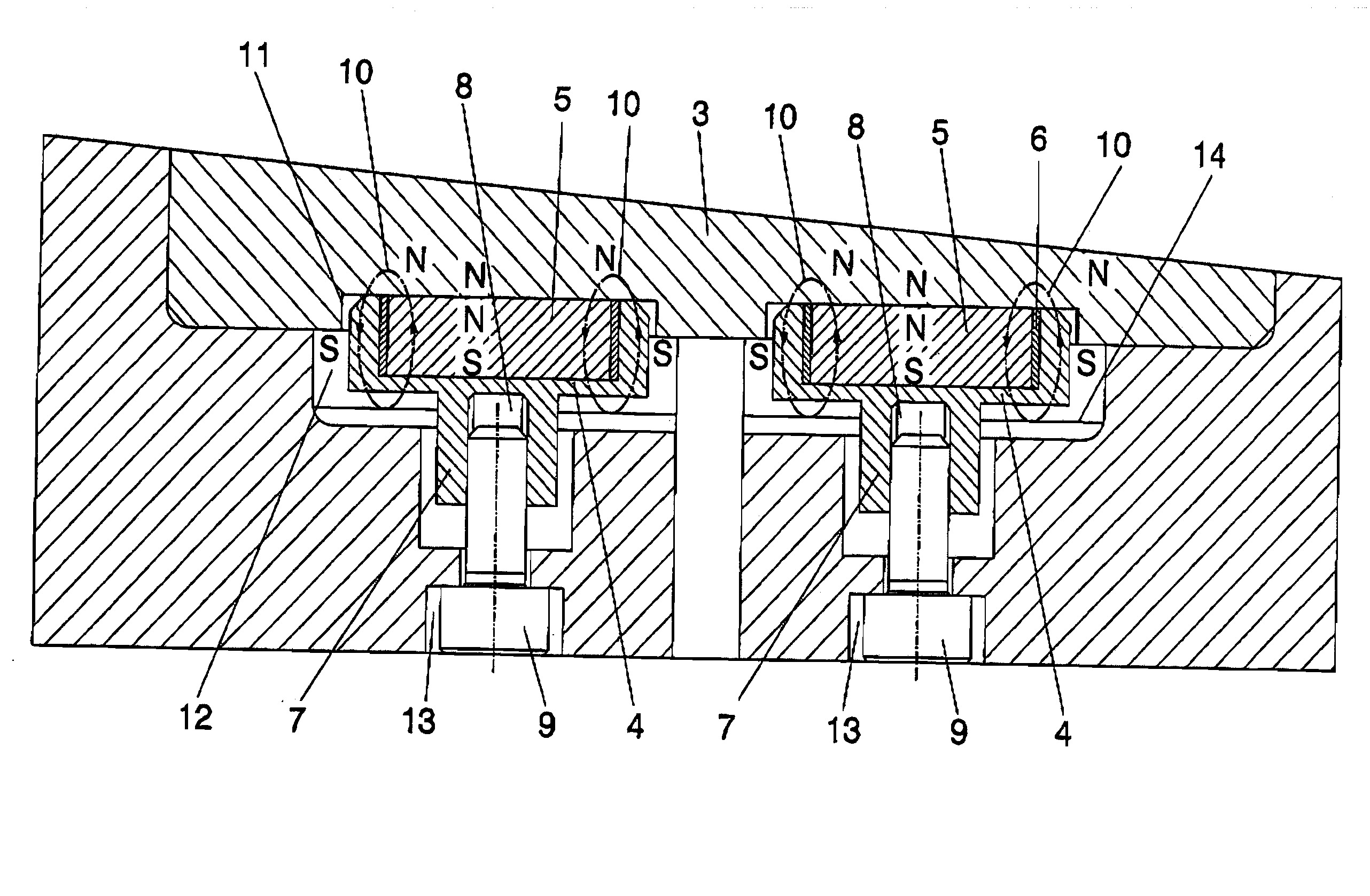Use of a device to join the parts of a model designed for use in tests in a wind tunnel and the corresponding device
- Summary
- Abstract
- Description
- Claims
- Application Information
AI Technical Summary
Benefits of technology
Problems solved by technology
Method used
Image
Examples
Embodiment Construction
[0011]In order to resolve any inconvenience caused and to achieve the objectives indicated above, the invention provides for the innovative use of a device to join the parts of a model designed for use in tests in a wind tunnel. The parts of the model are made of ferromagnetic material and designed in such a way that the parts are joined by a device consisting of at least one magnet.
[0012]To this end, the device can be adapted by incorporating a means of attaching it to one of the parts to be connected to it, including at least one magnet to connect it to one of the other parts.
[0013]As a result, the invention allows magnets to be used to join the metal parts used in the models together, something which has not been achieved to date, due to the characteristics of the models in question, such as their small size, the number of instruments fitted inside, etc., and factors inherent to the test, such as the large aerodynamic loads produced, the speed of dismantling between configuration...
PUM
| Property | Measurement | Unit |
|---|---|---|
| Area | aaaaa | aaaaa |
Abstract
Description
Claims
Application Information
 Login to View More
Login to View More - R&D
- Intellectual Property
- Life Sciences
- Materials
- Tech Scout
- Unparalleled Data Quality
- Higher Quality Content
- 60% Fewer Hallucinations
Browse by: Latest US Patents, China's latest patents, Technical Efficacy Thesaurus, Application Domain, Technology Topic, Popular Technical Reports.
© 2025 PatSnap. All rights reserved.Legal|Privacy policy|Modern Slavery Act Transparency Statement|Sitemap|About US| Contact US: help@patsnap.com



